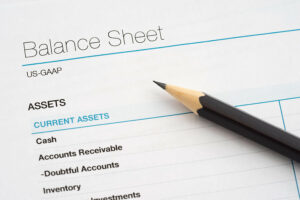
If the obligation is uncertain, the organization should disclose it, describing the nature and extent how to record a contingent liability of the potential liability. However, we should disclose such kind of information in the financial statement note. It tells the reader that there is a possible future economic benefit that may be flowing into the company in the future.
- If the contingent liability is consideredremote, it is unlikely to occur and may or may notbe estimable.
- In a few cases, an analyst may present two scenarios, one that includes the impact on the company’s cash flow and one that does not.
- However, contingent liability is a liability the company expects to incur in the future.
- Since the company has a three-year warranty, and it estimated repair costs of $5,000 for the goals sold in 2019, there is still a balance of $2,200 left from the original $5,000.
- GAAP and IFRS hinges on careful identification, clear descriptions, and precise financial impact estimations to ensure transparent reporting in financial statements.
- Contingent assets are the possible future assets which the company may or may not be able to take advantage of, it depends on any specific event that is not under company control.
- Company ABC has sued another company who misuse their own copyright material.
Common examples

For instance, a company must estimate a contingent liability for pending litigation if the outcome is probable and the loss can be reasonably estimated. For instance, an organization must estimate a contingent liability for pending litigation if the outcome is probable and the loss can be reasonably estimated. In such cases, the organization must recognize a liability on the balance sheet and record an expense in the income statement. If the loss is reasonably possible but not probable, the organization Bookkeeping for Startups must disclose the nature of the litigation and the potential loss range. However, when disclosing contingencies related to pending litigation, it’s important to avoid revealing the organization’s legal strategies. Product warranty expenses represent another form of contingent liability that can affect an entity’s financial reporting.

How does ASC 450 define and require disclosure of contingent liabilities in financial statements?

In that case, ABC Ltd. records this balance sheet contingent liability in their books of accounts. In that case, the company has to disclose contingent liability in its books of accounts. Suppose the company believes the customer will not win this case in the above example.

How Does Enerpize Help Businesses In Contingent Liabilities Treatment?

Contingent liabilities can be tricky because they involve uncertainty, but Enerpize online accounting software makes the process more organized and transparent. Instead of managing potential obligations manually, businesses can rely on Enerpize’s accounting tools to stay compliant and in control. Let’s see some simple examples of the contingent liability journal entry to understand it better. Liabilities are incurred in order to fund the ongoing activities of a business. These obligations are eventually settled through the transfer of cash or other assets to the other party.
- In this situation, nojournal entry or note disclosure in financial statements isnecessary.
- The materiality principle states that all important financial information and matters need to be disclosed in the financial statements.
- An environmental responsibility can occur in manufacturing, oil drilling, and mining.
- In our experience, it is generally easier to incorporate risk factors into the estimate of the cash flows and use a pre-tax risk-free discount rate.
- Under U.S. GAAP, if a company has a controlling financial interest, it must consolidate the VIE’s assets, liabilities—including contingent liabilities—and operations into its own financial statements.
- Entities should include estimations of the financial impact of contingencies when reasonably estimable.
If obligations are misstated—or worse, omitted entirely—it can erode trust and lead to financial penalties or disputes down the line. If the liability is probable, make a reasonable and reliable estimate of the financial obligation. If the amount cannot be estimated, disclosure in the notes is still required. If the company is involved in a dispute with tax authorities, and there’s a chance of an unfavorable outcome, the estimated tax due is considered a contingent liability. Another way to establish the warranty liability could be anestimation of honored warranties as a percentage of sales.
- On that note, a company could record a contingent liability and prepare for the worst-case scenario, only for the outcome to still be favorable.
- This is an example of a contingent liability that may or may not materialize in the future.
- Disclosures should not give misleading indications of the likelihood of income arising.
- Such events do not result in a liability or a reserve being recognized, nor are they typically noted in the financial statements, as their potential impact on the financial position of the entity is considered immaterial.
- Businesses must follow the accounting standards (such as IFRS or GAAP) to determine the proper treatment.


